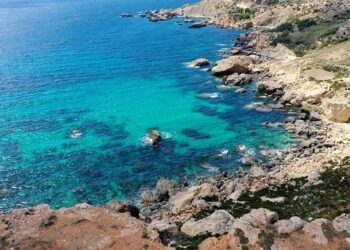A groundbreaking new study reveals that hunter-gatherers embarked on a daring sea voyage to the island of Malta at least 1,000 years before the arrival of early farming communities. This discovery challenges previous assumptions about prehistoric migration and seafaring capabilities, shedding fresh light on the adventurous spirit and maritime skills of Mesolithic populations in the central Mediterranean. The findings, published recently, provide compelling evidence that these early foragers were not only adept at navigating open waters but also played a significant role in the human settlement of the region long before the advent of agriculture.
Hunter-gatherers Pioneer Maritime Migration to Malta Challenging Established Farming Timeline
Recent archaeological findings have revealed that Malta’s first human visitors were not early farmers as previously believed, but rather intrepid hunter-gatherers who navigated the open sea more than 1,000 years before the advent of agricultural communities. This groundbreaking discovery shifts the narrative of human migration in the Mediterranean, illustrating a daring maritime journey undertaken by prehistoric foragers equipped with sophisticated seafaring abilities. Evidence includes stone tools and food remnants dating back to around 8,000 years ago, suggesting a complex adaptation to island life that predates farming cultures significantly.
Key implications of this discovery include:
- Reevaluation of the timeline for human colonization of Mediterranean islands
- Recognition of early hunter-gatherer communities as skilled sailors
- Insight into the evolution of maritime technology before the Neolithic era
| Era | Activity | Estimated Arrival to Malta |
|---|---|---|
| Mesolithic | Hunter-gatherers’ seafaring migration | ~8,000 years ago |
| Neolithic | Early farming and settlement | ~7,000 years ago |
Archaeological Evidence Reveals Advanced Seafaring Skills Among Prehistoric Communities
Recent excavations on the Maltese islands have brought to light powerful new evidence that challenges traditional timelines of human maritime activity. Archaeologists uncovered stone tools and remnants of prehistoric campsites dating back approximately 7,000 years, revealing that hunter-gatherer groups engaged in intentional sea crossings long before the arrival of Neolithic farmers. This discovery not only rewrites the narrative of early seafaring but also highlights the sophisticated navigational skills these communities possessed, including the use of primitive watercraft capable of open-sea travel across challenging Mediterranean waters.
The findings underscore a range of advanced behaviors, suggesting these early migrants planned their voyages with remarkable precision. Among notable artifacts uncovered were:
- Flint tools adapted for marine hunting and processing
- Shellfish remains indicating exploitation of coastal resources
- Fire pits suggesting temporary settlement sites on isolated islets
These materials paint a picture of resourceful and resilient groups pioneering oceanic travel, pushing back the accepted boundaries of prehistoric mobility by at least a millennium. The implications extend to understanding social networks, resource exchange, and the spread of technology across island environments in early human history.
| Artifact Type | Estimated Age (Years Ago) | Significance |
|---|---|---|
| Stone tools | 7,000 | Evidence of craftsmanship and tool use at sea |
| Fire pits | 6,800 | Indicates temporary habitation sites post-journey |
| Shell remains | 7,100 | Shows exploitation of marine resources |
Experts Call for Renewed Examination of Early Human Coastal Adaptation and Migration Patterns
Groundbreaking archaeological evidence now suggests that hunter-gatherer communities undertook intricate maritime journeys to Malta nearly 1,000 years before the arrival of early farming cultures. This revelation challenges long-held assumptions about the timing and nature of human migrations across the Mediterranean, highlighting that early coastal adaptation and seafaring capabilities were far more advanced than previously believed. Researchers emphasize that these seafarers used innovative, yet-understudied techniques to navigate and exploit the rich marine resources, demonstrating a level of sophistication that reshapes our understanding of prehistoric mobility.
The study’s findings urge scientists to reconsider established migration timelines, calling for a multidisciplinary approach that integrates underwater archaeology, paleoenvironmental analysis, and advanced dating methods. Key points emerging from this research include:
- Early seafaring: Evidence of purposeful island colonization much earlier than previously documented.
- Resource exploitation: Use of coastal and marine resources as vital sustenance supporting migratory movements.
- Technological innovation: Adoption of maritime tools adapted for navigation and survival in challenging conditions.
- Cross-disciplinary insights: Combining genetic, linguistic, and archaeological data to build a comprehensive migration model.
| Aspect | Previous Understanding | New Insight |
|---|---|---|
| Arrival on Malta | ~6,000 years ago (early farmers) | ~7,000 years ago (hunter-gatherers) |
| Maritime skills |
















